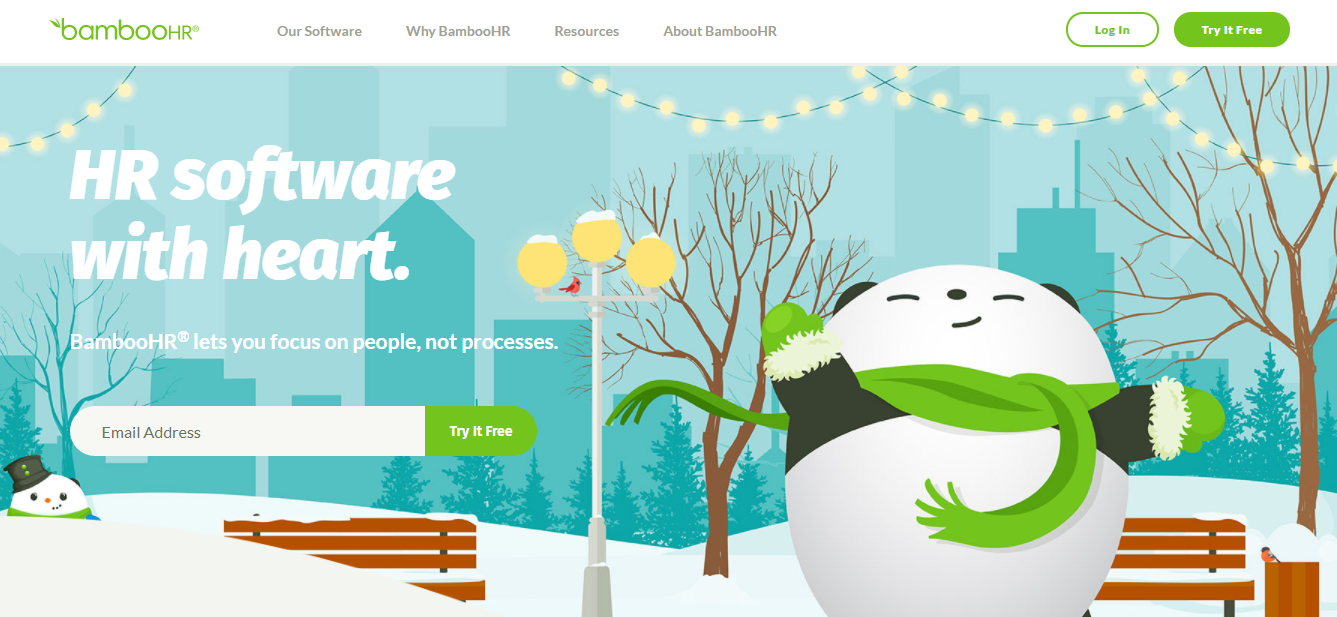Organizations constantly work to optimize their hiring systems as part of their continuous efforts to improve efficiency in current talent acquisition systems. A candidate tracking system provides automated hiring assistance that maintains uniformity between every recruitment step. Organizations must understand and leverage candidate tracking system capabilities because they need to recruit and keep top talent effectively.
Key Takeaways:
- The candidate tracking system provides an efficient organizational structure that enhances hiring operations.
- The key features which support better decision-making are resume management plus interview scheduling capabilities together with analytical tools.
- The examination of these system features enables organizations to pick efficient systems that enhance their production capabilities.
What is a Candidate Tracking System?
![]()
Recruitment software is known as a candidate tracking system that manages and facilitates recruitment activities through its features. The system centralizes recruiter activities by allowing administrators to keep candidate details organized and monitor application events simultaneously with contact functions for potential personnel selection.
These solutions perform administrative tasks which allow recruiters to spend time developing relationships with candidates while making quality hiring decisions. Implementing a candidate tracking system will decrease manual task durations while boosting productivity and creating a structured employee selection process.
Key Components of a Candidate Tracking System
- Database Management: The heart of any CTS is a well-organized and secured database that often contains candidate details such as resumes, application forms, interview notes and so on.
- Automation: This helps in organizing the assignment of tasks like sending e-mail, fixing interview times, and updating the position of a candidate automatically in order to avoid entailing time and making mistakes.
- Recruitment Performance Metrics: Enables the management to monitor and report on hiring factors including time to fill, source of hires, and quality of candidates among others so as to inform the recruitment process.
- Integration Capabilities: Interoperability with other HR applications as well as software including the Applicant Tracking Systems (ATS), Human Resource Management Systems (HRMS), and the social media.
Key Features of a Candidate Tracking System
Let us look at the key features of CTS that help in increasing efficiency, improving candidate experience as well as maintaining the required order in the recruitment process.
Resume Management and Storage
A CTS provides facilities in managing documents such as resumes of the candidates in a central location. This feature is beneficial to the recruitment agency as it enables quick collection, storage and modification of different data about the candidates so that such information is not misplaced.
Automated Job Posting
Candidates Tracking Systems usually have functionalities such as jobs posting which allow the candidates to post the job openings on the desired job boards and social media pages at once. This is time saving and guarantees a broad circulation for the job adverts.
Application Tracking
The tracking feature of the application enables the recruiters to track the status of the application in case it has been submitted, hired or rejected. This is quite beneficial in keeping track of the number of recruitments and whether or not an applicant was perhaps missed out during the process.
Candidate Communication
It is very essential that communication be well done for one to have a good recruitment program. A CTS also boasts of the ability to send out auto-emails to the candidates, at one, some, or all the critical points in the process of recruitment including the receipt of their application, the invitation to an interview, or even their rejection or offer of employment. This keeps the candidates informed and engages them with the offerings that the website has to display.
Interview Scheduling
It may take a considerable time arranging interviews with the potential candidates, especially if there are many people to interview. A CTS saves this process by using a scheduler on which the recruiters can suggest and agree with the candidates and interviewers on one suitable date and time for an interview thus eliminating the issue of back-and-forth emails and also the problem of scheduling.
Feedback Collection
Besides, after an interview, it will be possible to use the system to record and save the feedback given by the interviewers. This assists in decision making when appointed a new staff and will help in the provision of advice on where changes can be made in the whole process.
Reporting and Analytics
The recruitment process becomes more effective through the use of data-based insights. Data analytics tools in candidate tracking systems enable users to access reports that display essential metrics about candidate pipeline health and recruitment speed and candidate origin evaluation. The gathered insights allow recruiters to enhance their recruiting approach by making decisions backed by data.
Collaboration Tools
Most of the CTS platforms enable multiple recruiters to work on the same candidate’s profile at the same time. This considerably improves the work on teamwork and facilitates a consistent approach to the process of recruitment.
Integration with Other Systems
Another advantage of the modern CTS is its connectivity with other tools used in the HR and recruitment sphere. This will result in easy transfer from one platform to another and minimize on input redundancy to make the processes more efficient.
Customization and Flexibility
A large number of CTS platforms provide capability of operation according to the requirements of an organization. This flexibility of custom configuration and customization of the system means that the system has adopted the overall processes of the recruitment team.
Benefits of a Candidate Tracking System
Implementing a candidate tracking system confers numerous benefits that extend beyond recruitment. The automated features cut down on manual effort, leading to significant time savings and increased recruiting efficiency.
Improved Efficiency
With the help of a CTS, one can minimize time and efforts for recruitment while at the same time the mechanical tasks of recruitment can also be handled aptly. It means that employers are able to utilize their valuable time efficiently by involvement in useful activities that relate to the recruitment processes like reaching out to the candidates.
Enhanced Candidate Experience
A CTS makes sure the candidates receive regular and individual feedback at all the stages of the selection process. This improves satisfaction resulting in more likely acceptance of received job offers amongst the candidates.
Data-Driven Decision Making
Thus, using such kinds of tools, the recruiters can establish informed decisions in difference with intuition. This has the result of enhancing the performance in the hiring process and qualification of candidates.
Scalability
Recruitment needs in organizations also change with the growth of organizations. In essence, a CTS enhances the capacity of recruiting more employees without necessarily meaning compromising on efficiency where there is high volume of recruiting to undertake.
Reduced Recruitment Costs
By thus cutting down the period of recruitment and the time often known as pertinent time, a CTS can actually cut recruitment expenses for an organization. These are the cost that may include job posting fees, agency fees and cost of vacancy that are occasioned by unfulfilled positions.
Improved Compliance and Security
A CTS maintains strictly the privacy of candidates’ data by ensuring that all the data is stored comprehensively and legally according to the laws on data protection. This minimizes the threats of data loss and guarantee the compliance of legal standards within the organization.
Better Collaboration
With collaboration tools and centralized data, a CTS fosters better communication and teamwork among recruiters. This makes for cohesiveness and better cooperation among workers hence improving on the recruitment strategies.
Consistent Recruitment Process
A CTS ought to make certain that all the positions and the teams employed have the same policy on the recruitment process. This deems risks and bias hence increasing the chances of hiring a deserving candidate.
Enhanced Candidate Relationship Management
An excellent CTS also assists an organization to establish rapport with the candidates, particularly the ones not called for the job initially. This comes with an added advantage of a pool of talented employees with vacant can be considered whenever there is an opportunity in the company.
Improved Candidate Feedback
In this way a CTS can assist organization wherein candidate feedback is gathered and analyzed so as to determine organizational shortcomings in the recruitment. This is beneficial in making the experience of the candidates better and also in improving the image of the organization that is the employer.
Choosing the Right Candidate Tracking System
When looking for a tracking system, organizations should carefully choose the right Candidate Tracking system that will best suit them since it plays a very large role in recruitment. Here are the possible aspects when it comes to this choice:
- Purpose: Companies need to examine their exclusive criteria and objectives to determine the right candidate tracking system.
- Compatibility: Size of the business and financial constraints together with compatibility with existing HR software system requirements need evaluation.
- Usability: The process of finding a suitable solution demands scalability alongside flexibility because future business growth and organizational changes will require it.
- Security: Check that all routines respect candidate’s data protection and privacy legislation and properly secure the candidates’ data.
- Support: There is no better way of getting the best out of the system than engaging the vendor in a bid to get the best of them when it comes to support and training.
- Demo: Before drawing any conclusions, it is advisable to ask for demonstration of the system and know how this solution can be helpful for the organization.
- Total Cost: It is recommended to assess the licensing costs, set-up fees, as well as the maintenance cost and costs incurred in the uses of the software before accepting it.
Overcoming Common Challenges
Candidate tracking systems provide various benefits to organizations but they can still present difficulties during implementation and user acceptance stages.
- Resistance to Change: Employees are always expected to have resistance to change. Combat this through training and explain the benefits that come with the system to gain support.
- Data Migration Issues: One of the challenges that come up when implementing a system is that when an organization needs to bring in data from other systems, a project usually faces many challenges. Guarantee close collaboration with the vendor to minimize migration risks and check the reliability of the data.
- Implementation Issues: Generally, the organization already has one or more systems and it is not easy to integrate CTS into these systems already present in the organization. Choose a system that has strong integration features, and consult vendors to increase the compatibility of various components.
- Customization Limitations: Caution should be taken while using some systems as they may not support the level of customization required. While selecting a system, define your requirements during this process and focus on a system that can be easily customized.
- User Change: It is the process of monitoring the use of the system by users to ensure that all users of the organization have adapted to the use of the system. To increase the level of use, change management programs should be developed which includes enrolling, reinforcing and rewarding people for using the technology.
- Data Security Issues: Certain security issues should be implemented while dealing with candidate data. Prevent system hacking and develop adequate security enhancing measures to prevent people’s data from going to the wrong people.
Conclusion
In the current world, talent competition is very high, and the recruitment process is helpful in acquiring talented employees in firms. A candidate tracking system, which can also be understood as a candidate management system, solution redefines the scope of recruitment utility and offers numerous benefits for both recruiters and candidates associated with the organization.
From improving recruitment operational efficiency and positive impact on applicants to increased selection accuracy and better regulatory compliance. Candidate tracking systems are a highly beneficial tool for any organization that wants to upgrade its current recruitment standards.
Thus, it should not be surprising that technology will play a bigger role in recruitment going forward. Through the implementation of a candidate tracking system, various organizations can be assured of the fact that they have properly prepared themselves for the type of talent that will be in demand in the coming years.
Whether you are an SME business or a large company, there is always a possibility of creating a robust, fast, and friendly candidate tracking system for recruitment.






